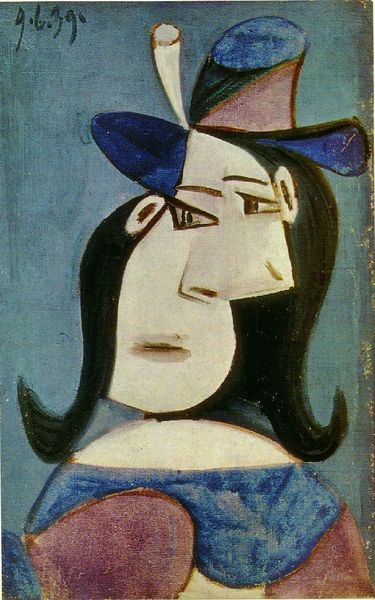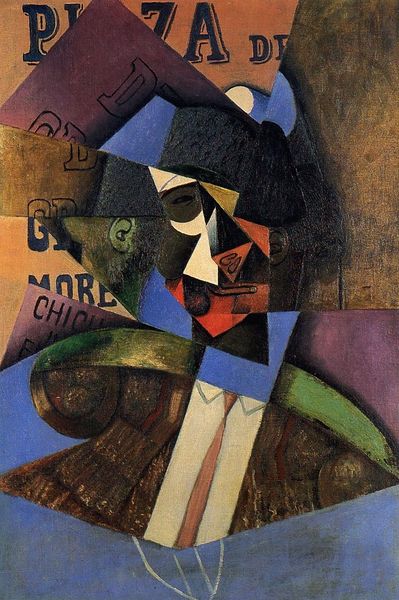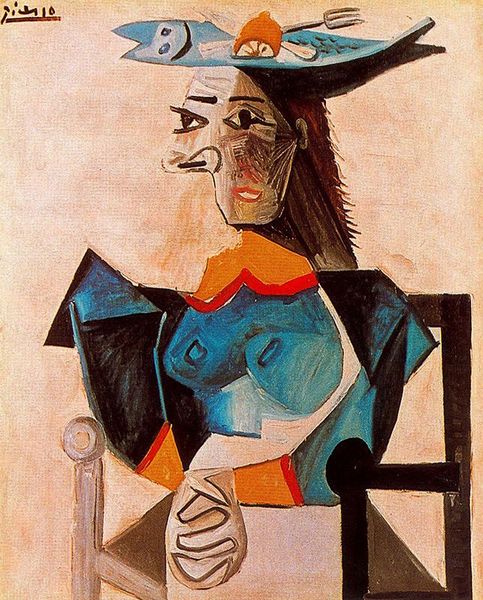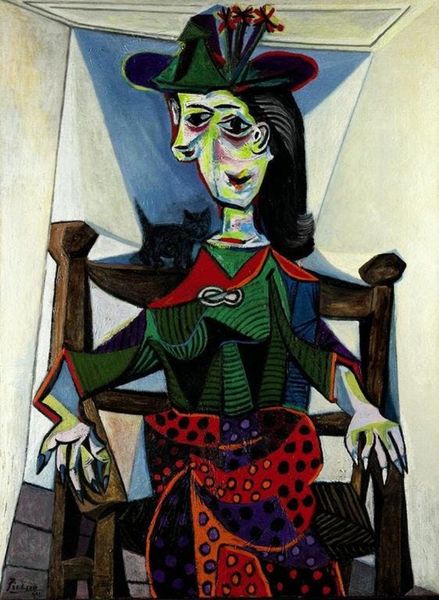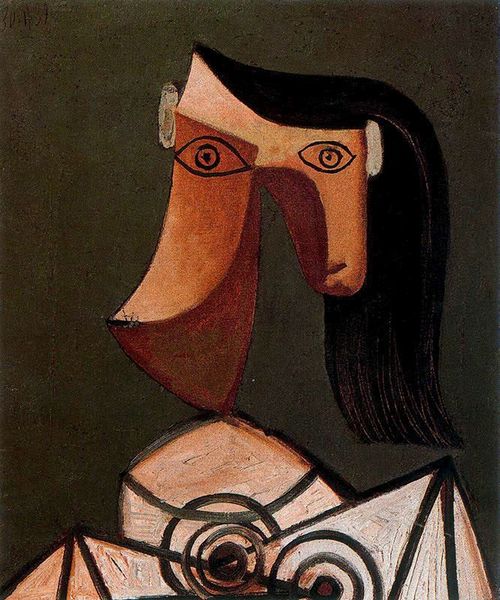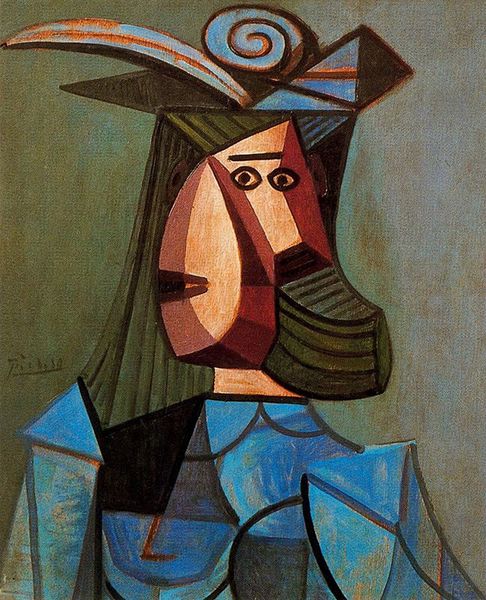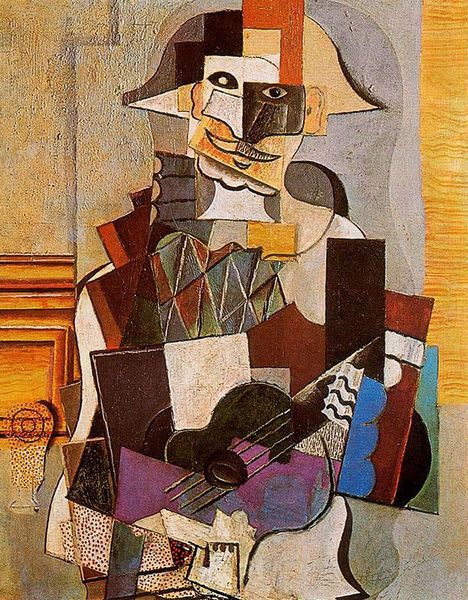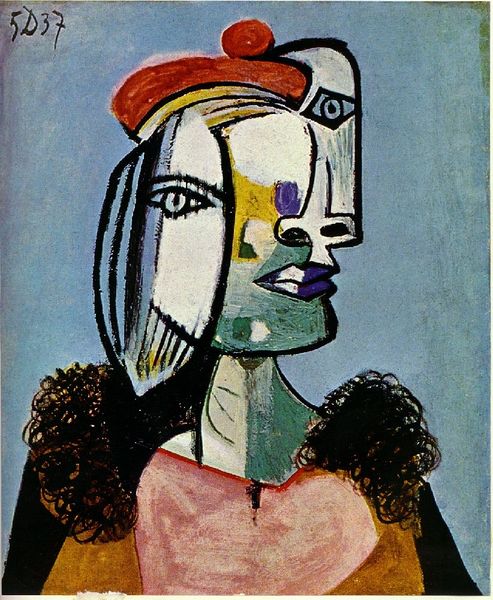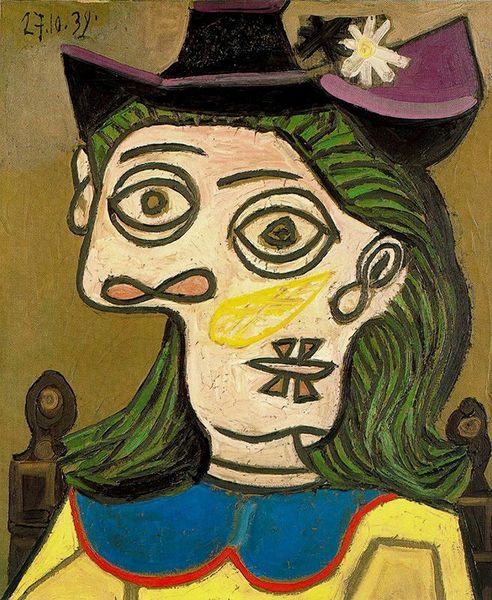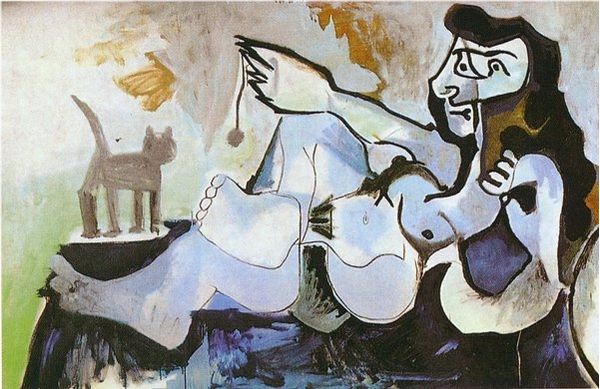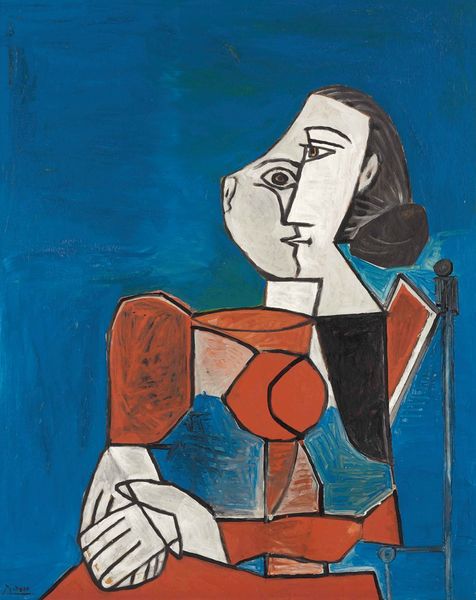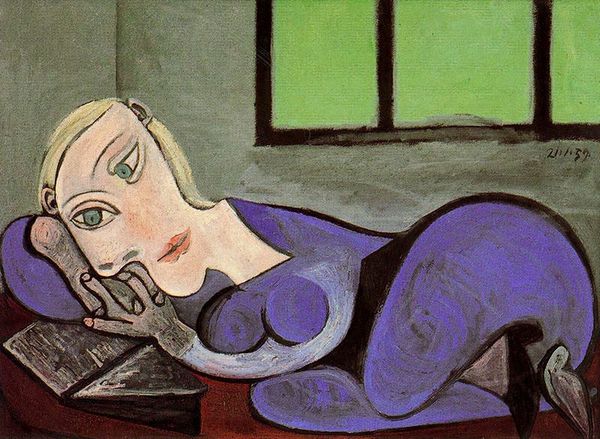
painting, oil-paint
#
portrait
#
cubism
#
painting
#
oil-paint
#
figuration
#
acrylic on canvas
#
geometric
#
modernism
Copyright: Pablo Picasso,Fair Use
Curator: Picasso's "Girl in Chair," painted in 1952 using oil paints, is an example of his distinctive approach to portraiture within modernism. Editor: My first impression is one of controlled chaos, almost as if the figure is being assembled right before our eyes. The bold use of blues and grays adds to the intensity. Curator: The fractured and reassembled perspective reflects Picasso's continued exploration of cubism. He dissects the form, offering multiple viewpoints simultaneously, disrupting traditional modes of representation and posing questions on spectatorship itself. Consider the sociopolitical environment in which he made this artwork: post-war and full of disillusionment, this cubist portrait almost stands as a form of protest toward representation, itself. Editor: Right, but let's delve into the materials for a moment. The texture of the oil paint looks quite deliberate; each brushstroke contributes to the overall angular effect, and the application doesn’t hide the process of making. There's also the intriguing use of negative space. The chair itself feels very fragmented, as if Picasso is questioning not just the figure but the object she occupies. Curator: That disruption mirrors broader societal shifts in how we understood identity in a postwar world, reflecting anxieties about social roles, the fragmentation of experience, and new visual economies in modernity. How might viewers respond to seeing their contemporary moment, laid bare by such a fractured approach? Editor: Absolutely. And it reminds me of how materials like oils could be procured and mixed: the agency the painter held in their craft at this time feels central to the finished result, in my mind. What I mean is, this is very obviously a constructed figure rather than some naturalistic portrait, showing, at least in part, that this artist consciously constructed a vision. It feels...laborious, somehow, too, right down to those bold red strokes for her lips, like a rebellion of some kind. Curator: An appropriate way to conclude our conversation. I am left to consider Picasso's critical reflection on the act of painting itself, while challenging how it is presented in museums to new audiences. Editor: Indeed. Thinking about this portrait's creation invites considerations about consumption and representation, something the art market all too frequently tends to omit from our analyses.
Comments
No comments
Be the first to comment and join the conversation on the ultimate creative platform.

